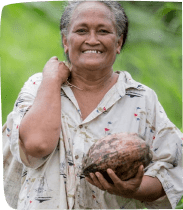In response to the publication today of the Organization for Economic Cooperation and Development’s (OECD) preliminary data on Official Development Assistance (ODA) for 2024, Oxfam International’s Aid Policy Lead Salvatore Nocerino said:
“Today’s figures lay bare an ugly truth: even before this year’s devastating cuts to aid, rich countries had already begun to renege on their moral obligations to the world’s most vulnerable communities. Not only had they been reducing aid, but also spending a significant share of it within their own borders to cover refugee costs.
“Only a handful of countries, including Luxembourg, New Zealand, Spain and South Korea, maintained or increased their aid budgets in 2024, and are expected to do the same this year.”
“New Zealand’s good standing in these latest OECD figures owes a lot to to our climate finance commitments,” said Oxfam Aotearoa’s Clinate Justice Lead Nick Henry.
Henry continues, “New Zealand has taken a world leading approach by providing all our funding for climate action as grants rather than loans. But with the climate finance commitment running out at the end of this year, the government needs to renew this essential lifeline for our Pacific neighbours.”
Nocerino insists, “If governments keep slashing aid, more children will go to bed hungry, more people will die from diseases we’ve long known how to prevent, and millions more will be pushed even deeper into poverty.
“Governments must urgently reverse these cuts and start taxing the super-rich, whose wealth has grown unchecked. In a world as interconnected as ours, diseases and climate disasters know no borders. These cuts are reckless and short-sighted, and will drive us all towards greater harm.”
Notes to editors
The OECD’s preliminary data shows that ODA totalled $212 billion in 2024, a significant drop from $223 billion in 2023. Last year’s ODA fell $237 billion short of meeting the longstanding commitment of allocating 0.7 percent of gross national income (GNI) to aid for low- and middle-income countries. Oxfam has calculated that in the 54 years since this promise was made, rich countries have failed to deliver a total of $7.5 trillion in aid.
In 2024, 13.1 percent was spent on domestic refugee reception.
According to Forbes’ 39th Annual World’s Billionaire List published on 1 April, billionaires are worth a record $16.1 trillion, $2 trillion more than in 2024.
Contact information
Rachel Schaevitz at [email protected]





